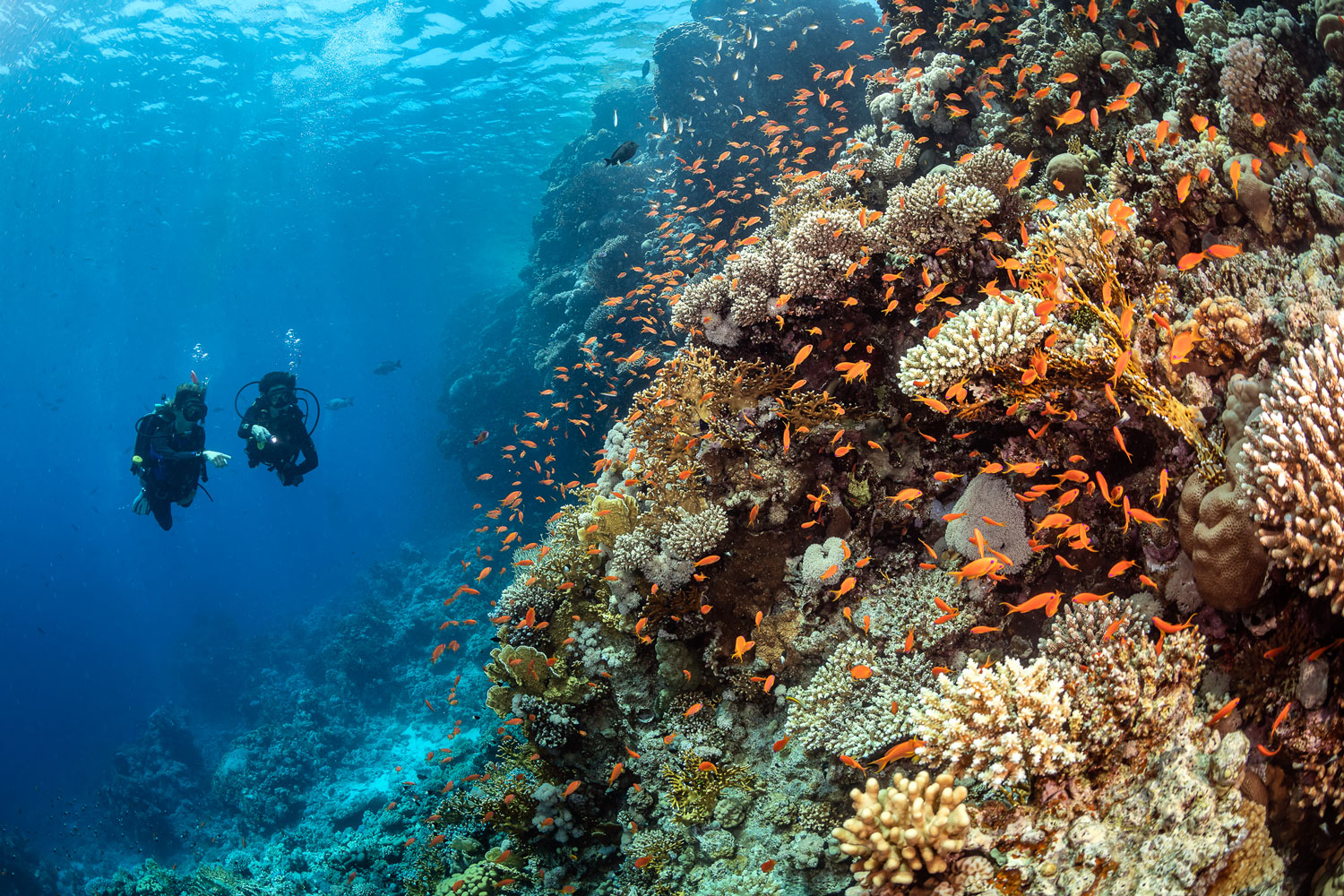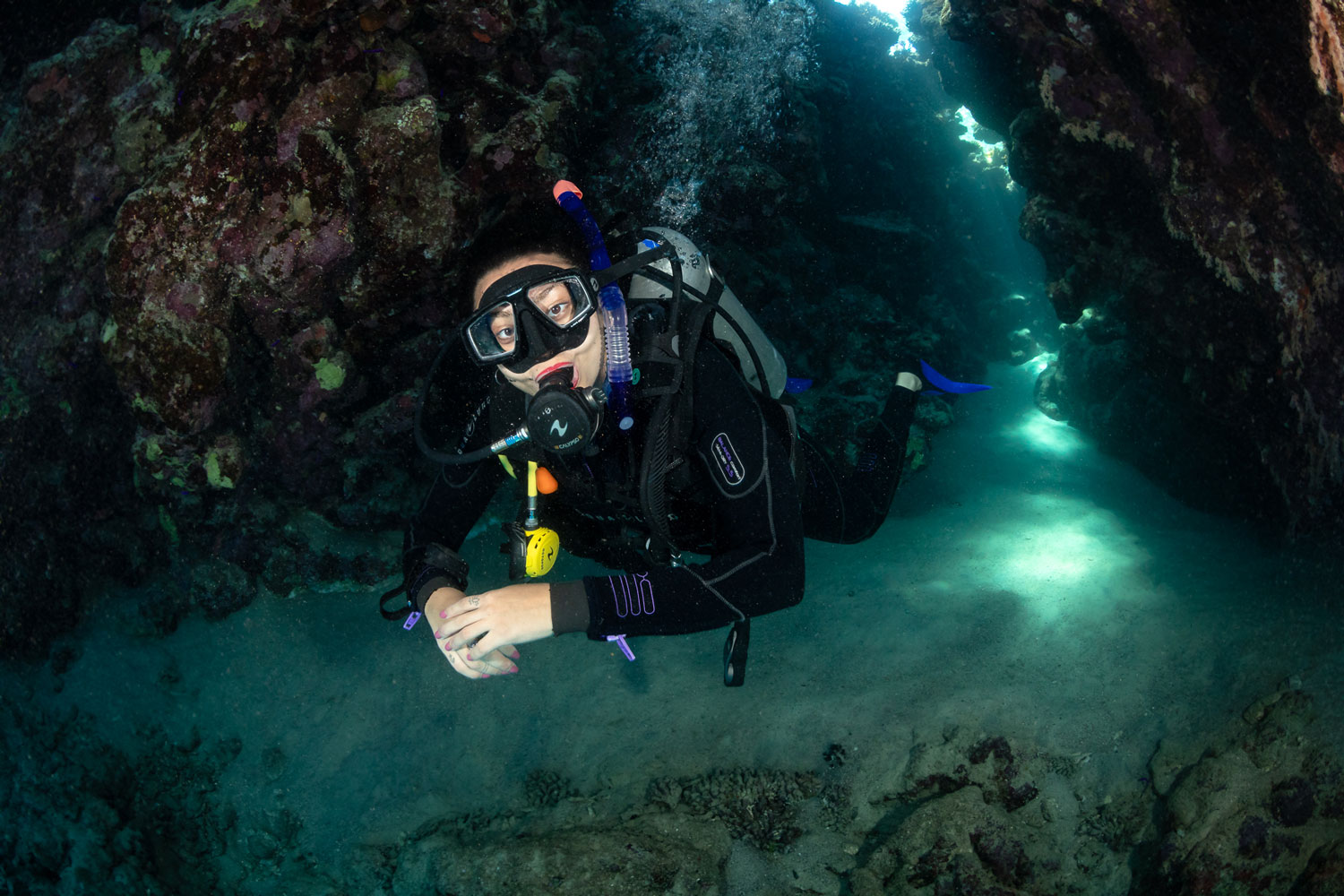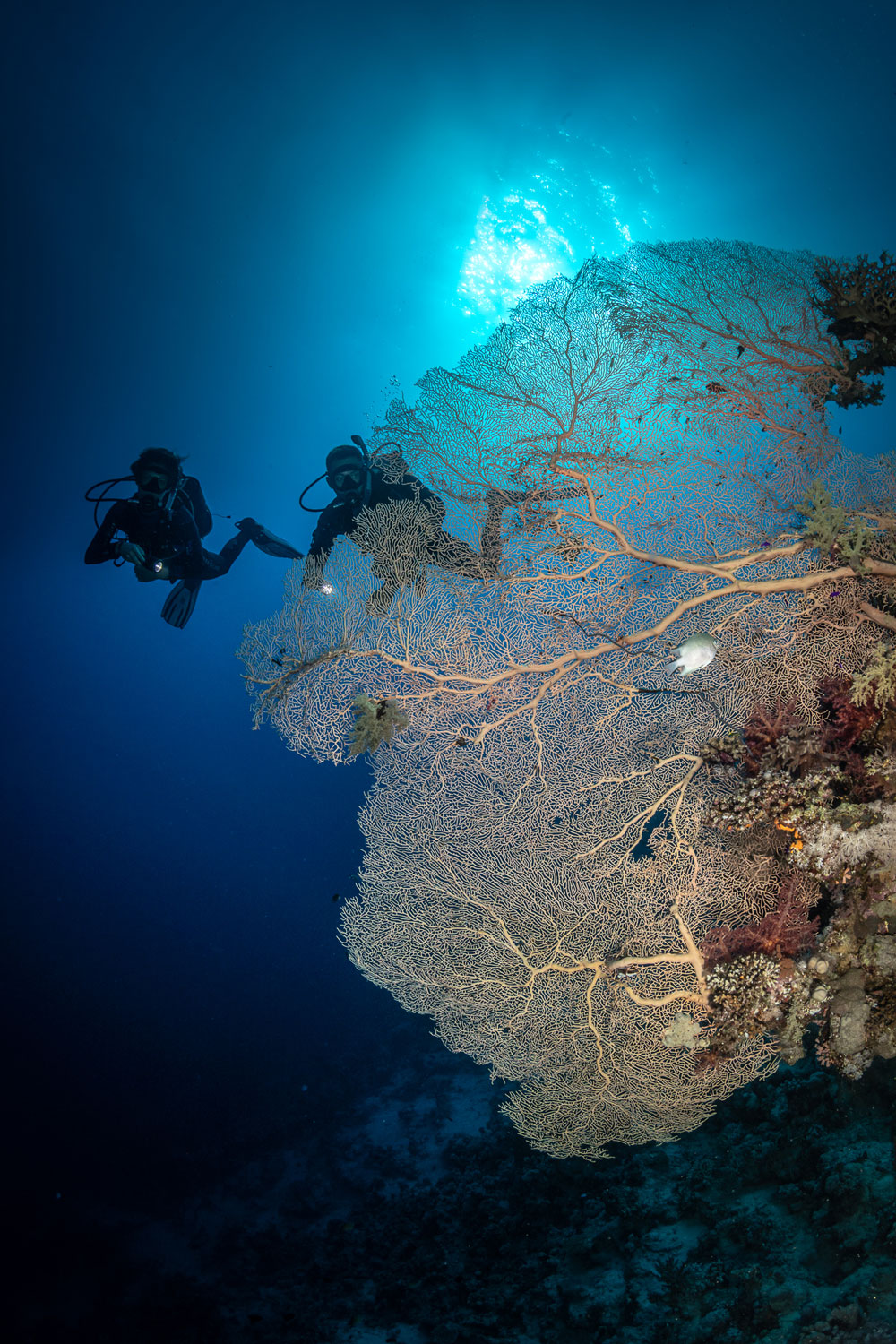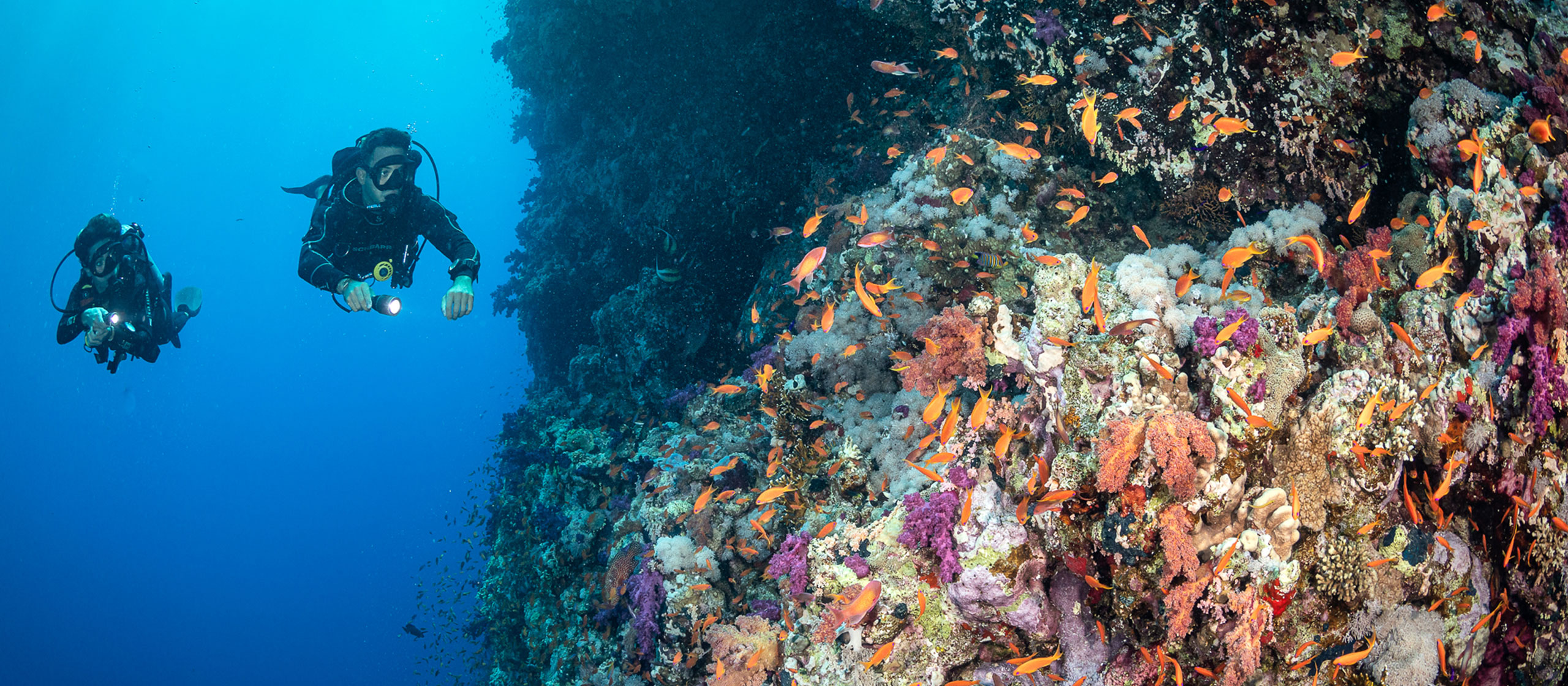Prepared diver
Carbon Dioxide – the Dreaded Enemy (part 2)
This is the second part of a three-part series on carbon dioxide, one of the most common contributors to diving emergencies. You can find part one here. Part three will be published in a future issue of Alert Diver.
Why is excessive carbon dioxide dangerous?
The technical term for abnormally high levels of carbon dioxide is hypercapnia. Hypercapnia causes a series of escalating effects, beginning with mild neurological impairment affecting cognition and motor control, effects that may or may not be noticeable to the subject.
CO2 is more narcotic than nitrogen by a factor of 20. Excessive concentrations in the bloodstream have a powerful psychological impact, causing confusion and irrational behavior. Hypercapnia can also trigger anxiety, irritability, the fight-or-flight response, or panic. Not to put a too fine point on it, hypercapnia makes you both stupid and fearful at the same time – a rather unfortunate combination. Severe hypercapnia is debilitating and will ultimately result in loss of consciousness.
Hypercapnia also causes vasodilation, or expansion of the blood vessels. There are a lot of blood vessels inside the head, and our skull lacks the ability to expand with them. As a result, increased blood flow will cause the intracranial pressure to rise. If you’re having headaches after diving, you might want to consider excess carbon dioxide as a potential culprit. Increased blood flow to the brain and central nervous system also means that more oxygen is supplied to these organs, which will make a diver more susceptible to CNS oxygen toxicity.
Since the breathing reflex is triggered by carbon dioxide, it should come as no surprise that dyspnea (shortness of breath) is a frequent symptom of hypercapnia. However, there are large individual differences with regard to the susceptibility to this effect, so that its absence is no guarantee that other effects, such as cognitive impairment, won’t occur.
Once hypercapnia sets in, its effects usually persist for at least a few minutes in mild cases and can last for several hours in more severe ones.

Taking things underwater means adding complications
Needless to say, all of the above symptoms are more consequential and even less desirable underwater than they would be on dry land. Falling unconscious obviously carries a high risk of drowning, while cognitive impairment and other psychological effects, such as anxiety or panic, can lead to bad, impulsive decision-making. Dyspnea, even when relatively mild, and the resulting heavy breathing can wreak absolute havoc on a diver’s gas supply, among other consequences which we will discuss below. And our fight-or-flight response is extremely counterproductive in any diving scenario.
Dead air space
The actual exchange of oxygen and carbon dioxide between blood and breathing gas takes place in the alveoli, small sacs in the far reaches of our lungs. To be eliminated from our system entirely however, the CO2 has to pass from the alveoli through the bronchi, the windpipe, and the hollow spaces in our head, before being exhaled.
These intermediary parts are collectively referred to as dead air space. They do not contribute to the gas exchange, and the amount of gas remaining in these spaces after exhalation, including carbon dioxide, is inhaled again in the next breathing cycle. The average person’s volume of anatomical dead air space is about 150 milliliters, while the average lung tidal volume at rest (i.e. the volume of air going into and out of our lungs per breathing cycle) is 500 milliliters. This means we re-inhale about 30% of the stale, carbon dioxide-rich air that leaves our alveoli. When breathing more deeply, either deliberately or due to exertion, it is less than that.
When diving, the volume of dead air space is increased by the mouthpiece and chamber of the second stage or rebreather mouthpiece. This added dead air space reduces the amount of CO2 we effectively discharge per breathing cycle.

Work of breathing, gas density, and dynamic airway compression
A second and more important factor that comes into play underwater is work of breathing (WOB). Work of breathing is the amount of work our muscles have to perform in order to move gas into and out of our lungs.
This work is a function of the mass flow of gas – the physical mass of the gas molecules passing through a cross-section of our airways per unit of time. This mass flow in turn is a function of three other quantities: the breathing rate (how fast we breathe), the tidal volume (the volume of gas exchanged per breathing cycle), and the gas density (the mass of gas per volume).
Under normal circumstances – breathing air unimpeded and at atmospheric pressure – our diaphragm is able to handle this work without difficulty. Like our heart, it’s a muscle optimized for efficiency and endurance, producing very little CO2 and able to work continuously for an entire lifetime without requiring rest. This sets it apart from most other muscle groups: We can’t walk or do push-ups for indefinite periods of time, for example.
However, breathing air at atmospheric pressure isn’t what we do when diving. Ambient pressure increases with depth, and so does gas density. Greater density means increased mass flow, which means higher work of breathing. Once the work of breathing exceeds the level our diaphragm is optimized for, CO2 production, and with it the risk of hypercapnia, increases dramatically.
This effect is further compounded by what is known as dynamic airway compression. Our airways are not rigid pipes, but rather somewhat floppy tubes. Due to friction along the walls of the airways, a high mass flow of gas creates a pressure differential, which in turn causes the tubes to compress and limit the flow, an effect that is similar to what happens during an asthma attack. In 2003, researchers Enrico Camporesi and Gerardo Bosco showed that the maximum ventilation by volume (for air) a person can achieve at 30 meters is about one half of the maximum at surface pressure.
The effect of equipment
In addition to the internal load created by the movement of dense gas inside our airways, another contributing factor to the work of breathing is the external load created by the scuba equipment. Our respiratory muscles do not only have to push gas back and forth; they also provide the energy to operate the mechanical parts of the regulator second stage. In addition, the mouthpiece acts as a literal bottleneck – sucking air through a small opening requires more energy than through a large one. You can easily confirm this by trying to breathe through a straw while taking a walk.
When diving a rebreather, the volume of gas being moved is far greater than on open circuit: Not just our lungs and airways, but the entire breathing loop is filled with gas that needs to be pushed along the circuit. The scrubber offers additional resistance, and the diver’s lungs remain the only available pump. Minimizing WOB is a key design goal for rebreathers, and divers are advised to be even more conservative with regard to gas density than they would be on open circuit.

Gas density limits
In consideration of the increased work of breathing, a research paper by Gavin Anthony and Simon Mitchell advises limiting the density of any breathing gas to 5 g/l, with a hard limit of 6 g/l. This corresponds to maximum diving depths of 29 and 37 meters, respectively, for air and nitrox. However, these limits have not yet been universally adopted by training agencies. The conventional depth limit for recreational diving is 40 meters, and training standards for decompression diving upheld by a number of agencies draw the line even deeper, at 55 meters for air, where the gas density becomes almost 8.4 g/l.
Emergencies
During normal operations, most of the above factors can remain almost unnoticeable to a diver. When we have to work harder and our body’s metabolic demands increase however, for example in a current at depth or when assisting a teammate in an emergency, they can suddenly kick in and turn a manageable situation into a difficult one, or make a difficult situation worse.
This concludes the second part of our little series. Part three will focus on countermeasures – skills and procedures to keep our CO2 load in check. Stay safe and stay tuned!
About the author
Tim Blömeke teaches technical and recreational diving in Taiwan and the Philippines. He is also a freelance writer and translator, as well as a member of the editorial team of Alert Diver. He dives a Fathom CCR. For questions, comments, and inquiries, you can contact him via his blog page or on Instagram.

